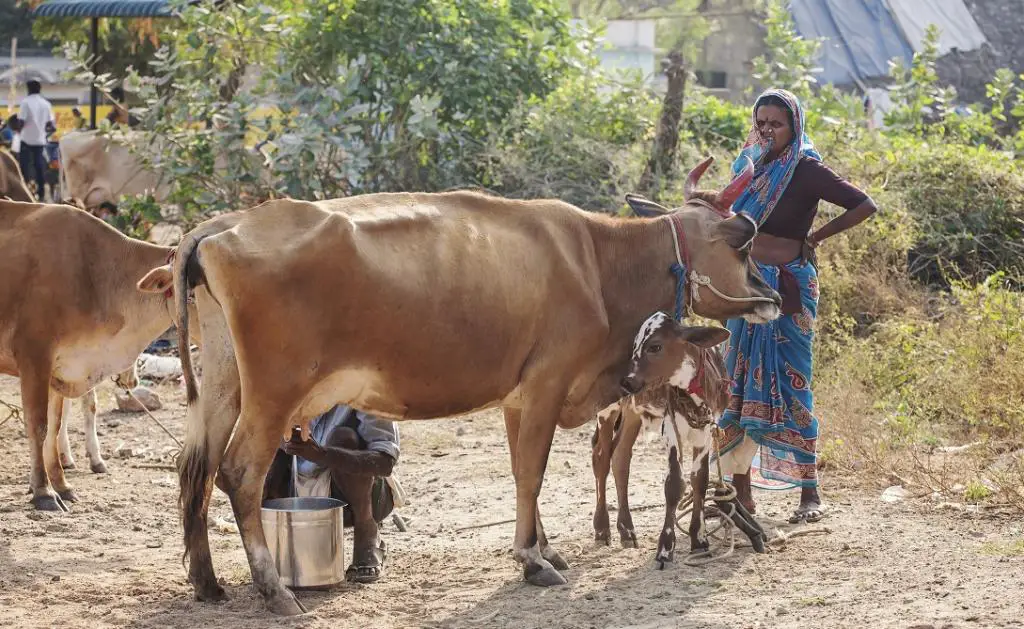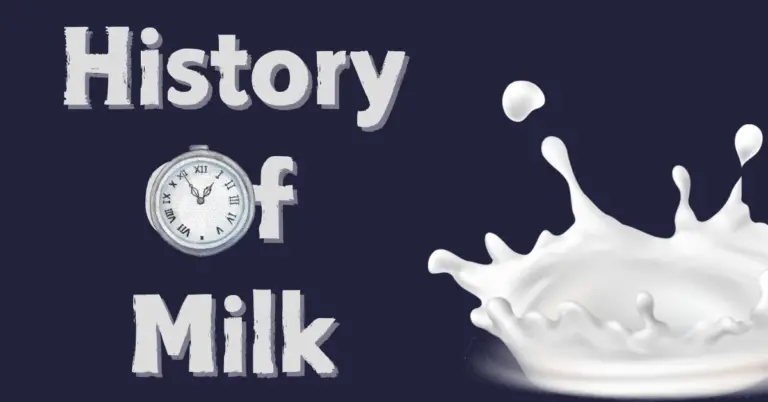Milk, an elixir of life and a dietary cornerstone has a history as rich and diverse as the cultures that have embraced it. From the dawn of domestication to the complex and dynamic dairy industry of today, the journey of milk is an intricate tale woven into the fabric of human civilization. This exploration delves into the origins, cultural significance, technological transformations, and the nuanced narrative that has unfolded through the ages. Let’s explore the history of milk.
1. Origins in Early Agriculture
The story of milk begins with the dawn of agriculture. Around 10,000 BCE, as humans transitioned from nomadic hunter-gatherer lifestyles to settled agricultural communities, the domestication of animals marked a transformative chapter. Goats and sheep, among the first to be domesticated, were not merely sources of meat but also became living repositories of a nutritious liquid—milk.

In regions like the Fertile Crescent, the cradle of agriculture, early pastoralists discovered that these animals could offer a sustainable and reliable source of nourishment. This revelation marked a significant shift in dietary practices, providing a continuous and varied food source for emerging civilizations.
2. Milk in Ancient Civilizations
The cultural significance of milk unfolded dramatically in ancient civilizations. In ancient Egypt, milk became intertwined with religious beliefs. The goddess Hathor, often depicted as a cow, symbolized fertility and motherhood. Milk, a symbol of life and abundance, played a crucial role in religious ceremonies and offerings.
Similarly, in Mesopotamia, the Sumerians revered Ninhursag, the goddess of milk, signifying the life-giving properties of this precious liquid. Across ancient cultures, milk became more than sustenance; it became a symbol of divine nourishment and a metaphor for the sustenance of life itself.
3. Milk in Classical Antiquity
As civilizations progressed into classical antiquity, the Greeks and Romans embraced the nutritional virtues of milk. Hippocrates, the renowned Greek physician, extolled the health benefits of milk, recommending it for various ailments. In the expansive Roman Empire, extensive dairy farming and consumption became integral to daily life.
Cheese-making, an intricate process, gained prominence during this period. The Romans, in particular, were known for their diverse cheese varieties, showcasing the artistry and sophistication of their culinary practices.
4. Middle Ages and Monastic Influence
The Middle Ages witnessed the continuation of dairy practices, with monasteries playing a pivotal role. The monks, often skilled in agriculture, became custodians of knowledge related to cheese and butter production. Monastic traditions elevated dairy farming to an art form, and each monastery developed unique varieties of cheese that reflected regional characteristics.
The medieval period saw the emergence of dairy culture as an essential component of European diets. Cheese-making, a craft mastered by monks, became not only a source of sustenance but also a form of culinary art.
5. Renaissance and the Rise of Transhumance
The Renaissance period brought with it advancements in agriculture and trade, shaping the dairy landscape. Transhumance, the seasonal movement of herds between highland and lowland pastures, became a common practice. This strategic movement ensured a continuous supply of milk throughout the year, contributing to the stability of dairy farming communities.
Cheese-making techniques were refined during the Renaissance, and regional varieties gained prominence. The artisanal nature of cheese production flourished, laying the foundation for the diverse world of cheeses we know today.
6. Industrial Revolution
The Industrial Revolution, a period of profound technological change, revolutionized the dairy industry. Innovations such as the centrifugal cream separator and pasteurization transformed dairy processing. The separation of cream from milk allowed for the standardized production of milk with a consistent fat content.

Louis Pasteur’s breakthrough in pasteurization ensured the safety of milk consumption by eliminating harmful bacteria. These technological leaps paved the way for large-scale production and distribution of dairy products, setting the stage for the modern dairy industry.
7. 20th Century: Commercialization and Health Campaigns
The 20th century witnessed the commercialization and diversification of the dairy industry. Refrigeration and transportation systems allowed for the widespread distribution of milk, reaching both urban and rural areas. Dairy cooperatives and commercial farms emerged, contributing to increased production and efficiency.
Nutritional campaigns promoting the health benefits of milk, particularly for bone development, led to the widespread inclusion of milk in school programs. The iconic “Got Milk?” campaigns underscored the notion that milk was an essential and wholesome part of the diet.
8. Globalization and Varied Milk Products
The latter part of the 20th century and the early 21st century brought about globalization and a diverse array of milk products. Plant-based alternatives, including soy, almond, and coconut milk, gained popularity as consumers sought alternatives for various reasons, including lactose intolerance and ethical considerations.
Furthermore, specialized milk products, such as organic, hormone-free, and A2 milk, gained traction. Consumers became more discerning, considering factors such as production methods, animal welfare, and the ecological footprint of their dairy choices.
9. Health Debates and Dietary Trends
As the nutritional landscape evolved, debates about the health impacts of milk arose. While milk is a rich source of essential nutrients, including calcium, vitamin D, and protein, questions have been raised about its overall impact on health.
Some studies suggest that milk consumption is linked to improved bone health and muscle development. However, concerns about saturated fat content, lactose intolerance, and potential associations with certain health conditions have sparked discussions about the role of milk in modern diets.
10. Future Trends: Sustainability and Innovation
Looking forward, the dairy industry is poised for further transformation. Sustainability is a key consideration as the industry grapples with environmental concerns, including water usage, greenhouse gas emissions, and land degradation. Organic and pasture-based dairy farming practices are gaining prominence as consumers prioritize ethical and sustainable choices.
Innovation in biotechnology may lead to the development of enhanced milk varieties with specific nutritional profiles. Precision agriculture, incorporating data-driven technologies, is likely to optimize dairy farming practices, ensuring efficiency while minimizing environmental impact.
Conclusion
The journey of milk through history is a multifaceted narrative of adaptation, innovation, and cultural significance. From its humble origins in the cradle of agriculture to the sophisticated and globalized industry of today, milk has been a constant companion in the journey of human civilization.
As we navigate the complexities of dietary preferences, ethical considerations, and environmental challenges, the story of milk continues to unfold. It remains a symbol of sustenance, cultural richness, and adaptability, reflecting the dynamic relationship between humans and one of nature’s most precious gifts. Whether sipped from ancient chalices or poured into modern glasses, the elixir of milk continues to nourish and connect generations across the ages.
